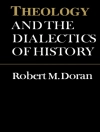The Dybbuk is the first comprehensive study of the historical and kabbalistic sources of the
dybbuk phenomenon, from the first recorded case of dybbuk possession in Safed in 1571 onward. Dybbuk possession differs from possession by demons or Satan. Its origin is in the Kabbalistic concept of
gilgul (transmigration) for sins that are so grievous that Gehenna is not sufficient punishment, and the soul must therefore wander until expiation is found. The dybbuk can temporarily find refuge in animals or people and can only be exorcised by a
Baal Shem, a great kabbalist or expert in Jewish magic. In addition to describing the history and evolution of this concept,
The Dybbuk includes English translations of all dybbuk stories discussed in the book, many translated for the first time.
Tabella dei contenuti
Acknowledgments
Introduction
1. The Theoretical Origins of the
Dybbuk Concept
2.
Dybbuk Possession in Safed in the Sixteenth Century
3. The Published
Dybbuk Accounts in the First Half of the Seventeenth Century
4. The
Dybbuk in the Second Half of the Seventeenth Century: The Age of the
Ba’alei Shem
5. Rabbi Israel Ba’al Shem Tov and Hasidism
Conclusions
Appendix to Chapter 2
Appendix to Chapter 3
Appendix to Chapter 4
Appendix to Chapter 5
Notes
Bibliography
Index
Circa l’autore
Morris M. Faierstein is an independent scholar. His previous books include
Jewish Mystical Autobiographies: Book of Visions and Book of Secrets and
The Early Modern Yiddish Bible: From the Mirkevet ha-Mishneh to Blitz and Witzenhausen.












